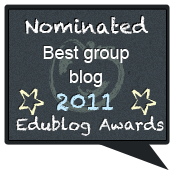During the first unit of my Grade 10 MYP Humanities class, after a Blitzkreig through the various government systems and political ideologies, I give the students two concepts – ideology, and governance. The rest is up to them: the topic of their inquiry, the product they create to show their understanding, the assessment criteria and the due date (within parameters). Their inquiry choices always astound me.
I always have the usual bunch interested in finding out why Hitler wanted to exterminate the Jews, or what life in Fascist Italy or Cultural Revolution-era China was like for its citizens. But there are always a few who go beyond the usual – inquiring into the effect of British imperialism on the world, or of liberalist ideology on modern social democracies – topics that you’d normally find in university classes. Many of my international students always make it personal, inquiring into political eras their families have told them about but never researched themselves since don’t live in their “home” country – the effects of Nazism on Czechoslovakia, the dictatorship in post-war South Korea, life under Pinochet in Chile.
I give them a choice of 18 different formats in three categories: oral, written, and visual. They need to cover one from each category; again, choice has resulted in creative outcomes. Instead of the typical oral presentation, students are creating screencasts. Instead of the typical written essay, students are creating newspapers, manifestos or fictional stories. Instead of the typical visual poster, students are creating propaganda or graphic stories.
In the end, I feel confident that I’ve turned a typical, predictable classroom (“let’s write an essay about Stalin”) into a learning environment that’s highly differentiated, engaging for all students and pushes them into a level of sophistication that I normally couldn’t plan for.


Dear Darryl,
In one of the micro-teaching experiences at my school, I collaborated with a humanities teacher who used PJ Harvey’s album ‘Let England Shake’ (which basically talks about the effects of war on soldiers, and whose songs are told from different soldiers perspectives), and I was amazed by the response students showed, especially when they discovered the history of the album. Each song took them in a different direction, and when it was time for them to report, there was just so much meaning in the air.
The choices you have given students truly diversifying the learning dimensions of the unit.
Thank you for sharing.
LikeLike
Hi Darryl,
I am a first time visitor to your blog. Thanks for sharing this approach to inquiry in your Year 10 class. I am interested to know how you helped the students to structure the process as they went. Did you have mini-deadlines? Did they make action plans? Did you use visible thinking strategies to determine what they were doing when you couldn’t “see” what was happening in their head? Exploring inquiry based learning is one of my professional goals this year, and I am interested in how to help students structure their inquiry once the flood gates are opened for them to study what they want within the class topic.
Thanks,
Katy Jean Vance
Librarian – Luanda International School
LikeLike
Hi Katy, thanks for your comment. Yes, with so many individual inquiries, I scaffold it as best as I can. Students create a proposal with their inquiry question (the concept must be explicitly stated in the question), an action plan, and a research journal. This is easily done as these are the strands of the MYP Humanities criteria for Investigating. During their inquiry/research time, I meet with them individually to discuss their research strategies, how effectively they’re following the action plan, and how they’re making sense of the research. Sometimes, I end the research class with some Visible Thinking Routines to share what they’ve learned: 3/2/1, or my current favourite – tweet your current understanding in 140 characters or less.
By the way, have you been in Luanda long? My good friends Anita and Shane were there for a few years but just left.
LikeLike
Hi Darryl,
Thanks for that extra information. I do like the ability to meet individually with students, especially as a librarian. It’s so often better to meet their needs just in time as it occurs than to try to design a research lesson that fits everyone’s needs. I LOVE that you have your students tweeting! That is slowly taking off at our school. I would like to see students using Twitter more, both for their research and sharing their knowledge.
I know Shane and Anita well! This is my third year at LIS, so I worked with them in the secondary school for the last two years. I have heard great things about their new jobs through the grapevine. Small world!
Cheers,
Katy
LikeLike
Pingback: Sophisticated Inquiries in MYP Humanities | Inquire Within | Learning Curve
This is great! I’ve been exploring this area for a while and noticed students perform so much better and are usually more analytical. I would love to see the different formats you’ve been giving your students.
Thanks.
LikeLike
Hi Fady, here’s my list:
ORAL
1. Expert Talk
2. Current Events
3. Debate
4. Mock interview
5. Screencast
WRITTEN
6. Factsheet
7. Manifesto
8. Book Report
9. Fictional Story
10. Analytical Essay
11. Magazine or Newspaper (specific date)
12. Website
VISUAL
13. Advertisement or Propaganda
14. Political Cartoon
15. Graphic Story or Animation
16. Annotated Map and/or Timeline
17. Informative Poster
18. Documentary Film
LikeLike
asics singapore online
LikeLike